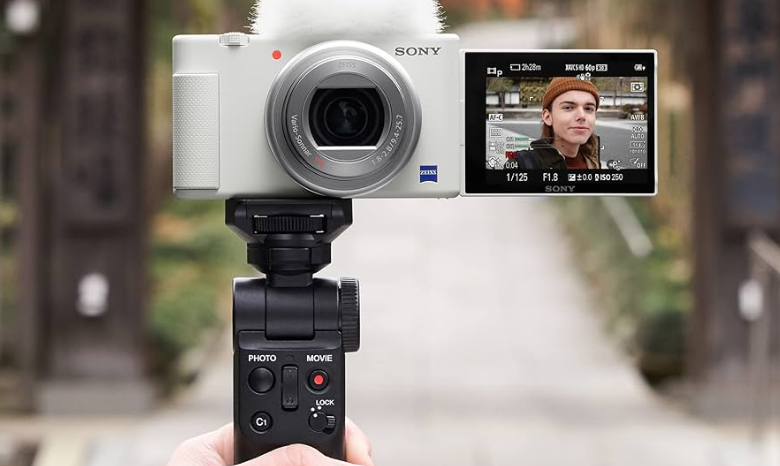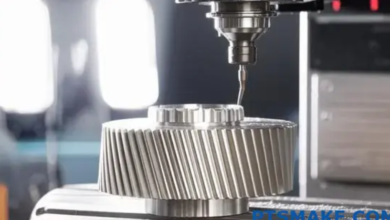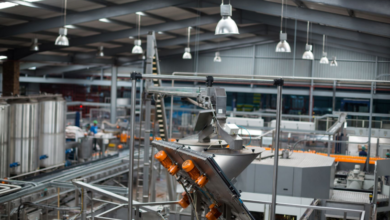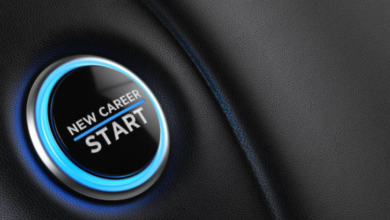Vlogging Camera or Smartphone? Choosing the Right Tool for Your Story

If you already share parts of your life online, you have probably asked whether it is time to move from your phone to a dedicated vlogging camera. At first the phone feels perfect: it is always in your pocket, it knows all your apps, and you can shoot and post in a few taps. Yet as you record more, small problems grow. Footage turns noisy in dim rooms, focus jumps when you move, and notifications interrupt your thoughts. The answer is not always to buy new gear. Sometimes your smartphone is exactly what your story needs, and sometimes a vlogging camera quietly opens new doors. The key is to match each tool to the way you actually live and create, instead of chasing a random upgrade.
Understanding your story before choosing a vlogging camera
Before you compare lens mounts and sensor sizes, it helps to understand the kind of story you are really trying to tell. Are you sharing quick daily updates with friends, or are you building longer vlogs that mix travel, food, and quiet moments of reflection? A fast paced, chatty style often fits well with a phone, which feels casual and familiar. A more crafted, cinematic story can benefit from a vlogging camera that gives you stronger control over framing, exposure, and sound. When you see the shape of your story clearly, the choice between phone and vlogging camera becomes less abstract and more practical.
Think about where you film most often. Maybe you record in small bedrooms, busy streets, or quiet cafés. Maybe you travel a lot and need to move quickly through airports and stations. If you are always on the go, a slim smartphone is easier to slip into a pocket and raise without drawing attention. If you prefer planned sessions at home, a vlogging camera on a tripod can feel natural. Your comfort matters because nervous hands and rushed setups appear in the footage, even if viewers cannot name what feels off.
When your smartphone is enough for your story
There are many situations where your phone is not just “good enough” but genuinely the best tool. Short vertical clips, spontaneous reactions, and behind the scenes moments all suit a device you already hold all day. Modern phones record sharp video in good light, focus quickly on faces, and connect directly to editing and social apps. If your main goal is to stay consistent and post often, the simplicity of a smartphone can protect your energy and help you build the habit of showing up on camera.
Your phone also shines when you need to stay light and discreet. Filming in shops, public transport, or crowded events feels less intimidating with a device everyone is used to seeing. You can lift it for a few seconds, get your shot, and blend back into the crowd. For many new creators this low pressure environment is what allows them to speak honestly. If you are still getting used to hearing your own voice, a heavy vlogging camera might push you into worrying about gear instead of focusing on your message.
See also: How Smart Home Technology Is Redefining Interior Design
When a vlogging camera makes a real difference
A dedicated vlogging camera becomes more attractive when you start to feel clear limits in your current videos. If your favourite scenes happen at night, in restaurants, or in small rooms with mixed light, you may notice that your phone often produces noisy, flat footage. A vlogging camera with a larger sensor and better lens can keep skin tones natural and preserve detail where the phone smooths everything away. This matters when you want your viewers to feel the texture of a city street at dusk or the warmth of a dim café.
Another turning point is project length. Phones can struggle with long continuous takes, especially if they overheat or receive calls while you record. A vlogging camera is built with this work in mind. It gives you physical buttons, a side flip screen, and the option to connect proper microphones. Over time these details save mental energy. Instead of checking whether your alarm might interrupt a scene, you trust the vlogging camera to do one job well while your phone stays free for maps, messages, or notes.
Everyday usability: living with a vlogging camera or phone
In theory a vlogging camera can do many things, but in daily life it must compete with the convenience of your phone. Think about the full journey from idea to upload. With a smartphone you pull it from your pocket, shoot, trim, add text, and publish in one place. With a vlogging camera you often copy files to a computer or tablet before editing. This extra step can feel heavy on busy days, so it is worth asking yourself whether you enjoy the editing process enough to justify the extra work.
On the other hand, carrying a vlogging camera can help you take your creative work more seriously. When you pack batteries, a small tripod, and your favourite lens, you are making a quiet commitment to your story. Setting up the vlogging camera on a table or railing turns scattered clips into planned scenes. The device itself becomes a reminder that you chose to show up as a creator today. Some people find this structure motivating, while others feel trapped by it. Knowing which side you lean towards will guide your choice more accurately than any spec sheet.
Image and audio quality in a vlogging camera vs phone
When people talk about upgrading, they often mean “I want my videos to look and sound better.” Here the gap between a vlogging camera and a smartphone can be noticeable, especially in tricky conditions. A vlogging camera usually handles low light more gracefully and gives you cleaner separation between subject and background. You can choose lenses that widen your field of view for room tours or tighten it for intimate close ups without relying on digital zoom. These options make it easier to design the look of each scene rather than simply accepting whatever the phone gives you.
Audio is even more important. Phones pick up a lot of room echo and environmental noise, particularly when you are not very close to the microphone. Most vlogging camera bodies offer a proper input for external mics, along with sound level controls. A small shotgun or wireless lavalier improves clarity immediately, which makes viewers more willing to stay through a five or ten minute story. If people often comment that they cannot hear you clearly, or if you find yourself boosting audio in editing and hearing hiss, this may be the strongest argument for shifting to a vlogging camera based setup.
Practical limits you should accept
No matter which tool you choose, it helps to accept a few limits so you do not chase perfection. A phone will never offer the same lens flexibility as a vlogging camera, and a vlogging camera will never be as integrated with social apps as your smartphone. Instead of trying to force one tool to do everything, decide where you want to compromise. You might use your phone for quick updates and your vlogging camera for planned episodes, or shoot main footage on the camera and capture supporting clips on the phone. This mixed approach uses each device where it feels strongest.
Making a decision you can grow with
In the end, the choice between smartphone and vlogging camera is less about which is “better” and more about which one you will actually use week after week. If you are still building confidence and experimenting with short, simple clips, staying with your phone and improving your light and framing might be the smartest step. As you gain experience and notice specific technical limits, you can plan a thoughtful move to a vlogging camera that addresses those exact issues instead of buying features you never touch.
Whichever path you choose now, leave space to evolve. Your first serious vlogging camera does not have to be your last, and your phone will always remain a useful backup. What matters most is that your tools feel like partners, not obstacles. When it becomes natural to reach for the device, press record, and tell the truth about your day, your audience will feel that ease. Over time they remember your voice, your humour, and your perspective far more than the logo on the device that captured it.




